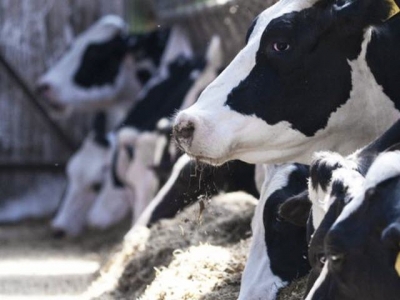Metabolizable amino acid study points to areas for further research

Journal of Dairy Science publishes meta-analysis of metabolizable amino acid effects on dairy cattle performance.
In its latest edition, the Journal of Dairy Science published a study titled “Meta-analysis to Predict the Effects of Metabolizable Amino Acids on Dairy Cattle Performance.”
More than 190 peer-reviewed studies published between 1990 and 2014 were identified and reviewed by the authors, according to an announcement from Kemin, which sponsored the meta-analysis.
Based on 63 studies that met the inclusion criteria, the investigators arrived at several main outcomes, including that, among essential amino acids, methionine had the largest effect on milk protein yield and percentage, while histidine had a large effect on milk yield, Kemin said. Regarding lysine, the authors concluded that additional research with greater treatment differences are needed to elicit consistent measurable effects on milk yield or composition.
The studies showed that the difference in metabolizable lysine between the control and treatment groups was minimal: 6.36% versus 6.38% of metabolizable protein. Further analysis indicated that an average 11 g metabolizable lysine difference between treatments was associated to positive responses.
This correlates well with research Kemin conducted in which measurable improvements in production were routinely observed with significant increases in metabolizable lysine levels, the announcement said.
Kemin senior technical service manager Dr. Ken Griswold said, “Kemin Industries funded this meta-analysis to help expand the knowledge base of amino acid nutrition and to gain understanding of its impact on dairy cattle performance. The findings of this study will also help the industry identify areas for further research.”
In addition, most studies included in the meta-analysis were conducted before sources of rumen-protected lysine were commercially available. Therefore, most of the treatment differences generated within an individual study were reliant upon combinations of feedstuffs rather than by use of consistent, concentrated, cost-effective sources of rumen-protected lysine, which may have prevented the specific treatment from reaching optimal metabolizable lysine levels identified in the National Research Council's 2001 dairy nutrition recommendations, Kemin said.
Related news
 Vitamin A in cattle fodder may protect against cow's milk allergy
Vitamin A in cattle fodder may protect against cow's milk allergy Supplemental vitamin sources may not achieve same effect as natural vitamins found in green forages.
 Farming Bosrander and Meatmaster sheep
Farming Bosrander and Meatmaster sheep Freddie Peters has combined the best qualities of two breeds to establish the Meatmaster breed.
 Farming with Indigenous Veld Goats
Farming with Indigenous Veld Goats When Ross Rayner started farming near Adelaide six years ago, he purchased several hardy Xhosa Lob-eared goats, an Indigenous Veld Goat ecotype.